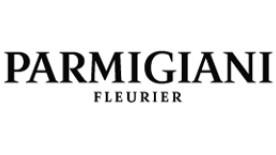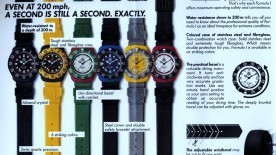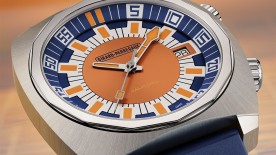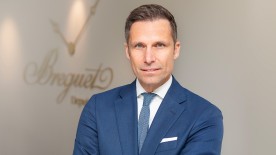IW Magazine - 10 October 2012
Jonathan Bues
According to Parmigiani Fleurier CEO Jean-Marc Jacot, only two Swiss watch firms can accurately claim to produce virtually all the components in their timepieces.
These are his own firm and Rolex—the former making in the neighborhood of 5,000 watches annually, the latter nearly one million. While a number of other watch companies would certainly assert that they, too, are true manufactures, there remains the fact that Parmigiani Fleurier stands out for its impressive vertical integration.
In July, International Watch traveled to Switzerland to tour Parmigiani's factories and observe how its 5,000 watches are made each year. One might wonder why a company making only 5,000 watches per annum would require no fewer than five locations for watch production. After all, many brands make several times that amount at just one factory.
It is helpful to remember that Parmigiani is but a part of the much larger Sandoz Family Foundation, whose watchmaking operations span every conceivable aspect of the craft, from the production of calibers and cases to tricky, oft-outsourced components such as screws, springs, and escapements. It is through these many Sandoz-owned divisions that Parmigiani produces a beautiful, high-end line of watches.
The facilities
When touring any given Sandoz facility, from Les Artisan Boiters, responsible for case making; to Elwin and Vaucher, which manufacture screws and movements, respectively, we spied a veritable who's who of watch brands in various states of production. A handful of these firms, such as Hermès, which has a minority stake in Vaucher, openly talk about the fact that the Sandoz supplies many of their components. But the Sandoz-owned manufacturing network operates “in the dark” for many more firms that prefer to remain unnamed. Alas, these firms request the utmost discretion. All I can do is assure you that Sandoz's client list is as prestigious as it gets.
“Many watch brands will say that they have a supplier of screws or a dialmaker in La Chaux de Fonds, causing you to imagine a little, independent atelier,” Parmigiani Americas president Marcia Mazzochi told me. “They are less likely to add that they actually go to Parmigiani.”
Parmigiani Fleurier often describes its manufacturing infrastructure as a hand. Each finger represents one of its factories. In addition to the above mentioned Vaucher, Les Artisans Boiters (LAB) and Elwin, the hand also includes Quadrance et Habillage, and Atokalpa, arguably the key to Parmigiani's complete independence.

© IW Magazine
Atokalpa is responsible for supplying gear trains, pinions, microgears and, most critically, escapements—by far the most difficult part of a mechanical watch movement to manufacture. At the time of our visit, Atokalpa was unable to receive visitors due to repairs that were being made to the building following recent water damage.
Vaucher first
The first of the factories we visited was Vaucher. Readers of International Watch will likely recognize Vaucher as the best-known factory associated with Parmigiani. (Even major clients such as Corum and Hermès proudly mention Vaucher in their press materials.)
Like Parmigiani Fleurier itself, Vaucher is located in Fleurier, in the picturesque Val-de-Travers—a bucolic, typically Swiss valley with two claims to fame.
First, of course, for its longstanding and celebrated watchmaking industry; Bovet, Chopard, and Parmigiani all call the small town of Fleurier home. Its second, and perhaps less known distinction is as the birthplace of absinthe, the anise-flavored liqueur believed by some to cause hallucinations.
By most standards, Vaucher is a medium-to-large sized watchmaking facility. In all, the company operates 16 CNC machines. One of those machines is used purely for the manufacture of gold movement parts, allowing Vaucher to reclaim gold fragments that are lost during the machining stage.

Pocket watch with telescopic hands © IW Magazine
This CNC has the distinction of machining each Corum Golden Bridge movement, in addition to sundry parts such as gold rotors for Parmigiani watches. Though Parmigiani accounts for the majority of the production at Vaucher, the company supplies to many external firms besides Corum and Hermès, including Richard Mille, Bulgari, and others that prefer to go unnamed.
A number of those marques could be seen being finished in Vaucher's dedicated finishing room, where employees rotate through various polishing and finishing tasks, including the application of côtes de Geneve, perlage, and all different levels of polishing.
Assembly
Not far from the finishing atelier is the assembly room at Vaucher, which is not open to tours, and which the company keeps hermetically sealed much of the time. To facilitate workflow, movements and parts are passed from finishing to assembly through double windows, preventing dust from contaminating the pristine workshop. It is in this room that less complicated Parmigiani calibers are put together alongside some from other brands.
Within Vaucher there is a small watchmaking school where students are trained in the craft. After they complete their courses in watchmaking, which Vaucher offers free of charge, students typically go to another watchmaking company for a few years before returning to Vaucher and the Val-de-Travers. It's interesting to note that these young watchmakers are under no obligation to Vaucher after receiving a free education. According to the gentleman leading our tour group, they often choose to return and work for Vaucher simply because “Fleurier is home.”
Restoration
We next visited Parmigiani's Haute Horlogerie and Restoration center, on the other side of town. This is where Parmigiani Fleurier started in 1976—Michel Parmigiani gained his reputation as a watchmaker performing restoration projects that others could not. Some of the pieces he was entrusted with restoring belonged to the large and valuable Maurice Sandoz Collection.
Today, restoration continues to play an important role for the company. The firm employs a department of highly advanced watchmakers whose job is to fulfill the restoration of rare mechanical timekeepers and automata ranging from pocket watches with telescopic hands that follow an oblong, oval-shaped chapter ring, to complicated, lifelike singing birds.
A large number of Parmigiani-restored timepieces from the Maurice Sandoz collection traveled to New York in October and November of last year for a highly touted public exhibition. These included a Peacock Egg by Faberge, a pistol whose trigger emits a small songbird from the barrel, and numerous watches, clocks and automata acquired by Maurice Sandoz through a lifetime of passionate, some might say eccentric, collecting.
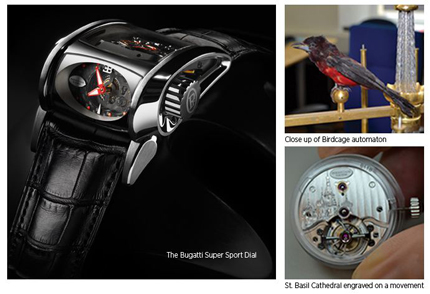
In the Haute Horlogerie department, we saw the examples of the new Bugatti Supersport being assembled alongside minute repeaters and tourbillons, including one bespoke whirlwind with Saint Basil's Cathedral engraved on one of its plates, over a côtes de Geneve motif. This piece was, in all likelihood, bound for the wrist of a Russian collector.
This quiet atelier employing a handful of the most highly skilled watchmakers in the region is located on the second floor of Parmigiani's headquarters. The building housing both restoration and haute horlogerie is a typically Swiss chalet.
Making screws
Following our visit to Haute Horlogerie and Restoration, we boarded a charter bus and set out to Elwin SA, an old screwmaking company, based in Moutier, founded in 1912. Here, we saw how high-end screws are made in haute horlogerie. The process involves feeding long metal rods into machines that are programmed to cut individual screws one at a time. The rods are made from various types of metal, including gold, which is kept in a locked room.
Once again, the list of the brands that use these screws, in some cases even commissioning them for specific calibers, was nothing short of astounding. Elwin, we learned, makes turned metal screws the old fashioned way, and has even adapted 100-year-old Tornos machines—original equipment from the year the factory commenced operations—to be programmed by computer.
Even with this modern adaptation to original equipment, the pace at which Elwin produces its screws is slow by industry standards. Whereas the typical, inexpensive screws you may find in an uncomplicated ETA caliber can be made at the rate of six per minute, Elwin's carefully machined screws, such as those found in Parmigiani watches, are made one per minute. The screws themselves even pass a rigorous quality control phase using an Isoma machine, which magnifies the screws and allows the shopmaster to compare its dimensions to a scaled, two-dimensional rendering. The QC process is performed seven times per day on randomly pulled screws.
The results speak for themselves. Watchmakers who have worked on high-end and middle-to-low-end watches have told me that the simple act of tightening a screw is that much easier with high-quality turned screws.
Cases
After visiting Elwin, we continued our comprehensive tour of Parmigiani Fleurier by going to La Chaux-de-Fonds-based Les Artisans Boîters SA. This casemaker, acquired by Sandoz in 2000, is perhaps the most advanced casemaking factory in the world. A number of very famous watchmaking firms with cases of unusual shapes and proportions come to LAB to have their cases made.
Again, these clients prefer to remain anonymous. But to give you an idea of the reach of LAB, I counted thirteen brands being worked on while we toured, all of them in the high to very high end range, including, of course Parmigiani. It takes an extremely capable case-maker to create something as futuristic and different as the architecture for the Parmigiani Bugatti Supersport, after all. The cases are made using advanced CNC machines and polished by hand. Some models for certain brands are also “cased up” at LAB.
Dials
We completed our visit of Parmigiani by seeing dials being made at Quadrance et Habillage, which recently moved from Fleurier to La Chaux-de-Fonds. Quadrance machines its dials, but they achieve textured surfaces using very old methods. Often, this means bathing the dials and then brushing them with a number of powders such as Panama, Pierre Ponce, and Pierre du Levant.
Some of the more complicated dials take sixty steps to complete. Where text or other printed information appears on Parmigiani dials, it is thanks to transfer printing, in which a rubberized half sphere picks up and places the ink onto the dial. Markers and numerals are applied by hand.
After seeing Parmigiani Fleurier watches being made, it would be difficult to conceive of a more vertically integrated watch company. Perhaps because of its relative youth as a brand, and the fact that its operations are spread out throughout the Canton of Neuchâtel, the perception of Parmigiani as a manufacture is not what it could be.
Though the definition is often stretched and the term is bandied about tirelessly in marketing, we tend to think of a manufacture as a watch company that makes its watches under one roof. Should we call Parmigiani the manufacture with five roofs? I, for one, prefer their own metaphor of the hand.


